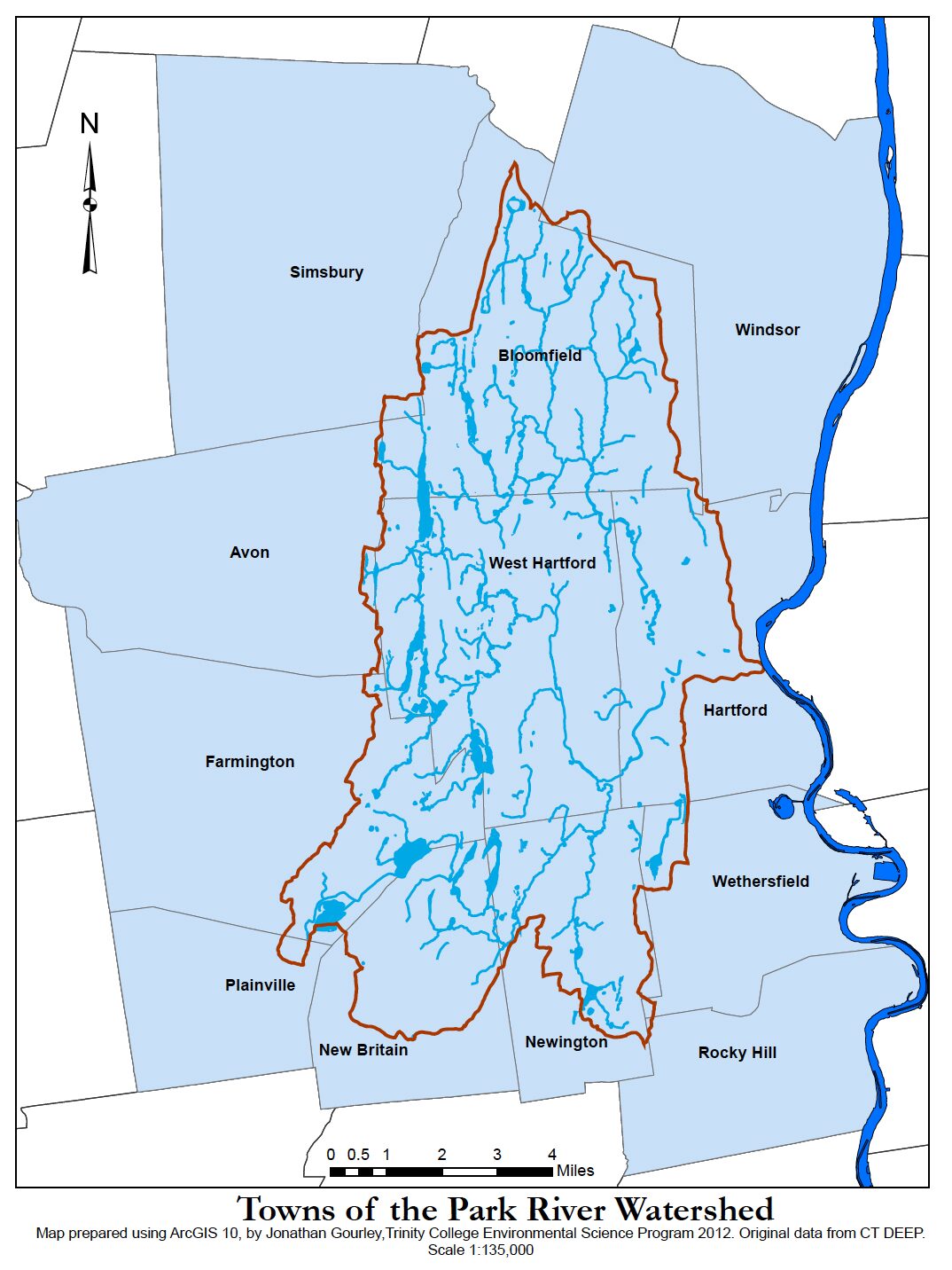About the Watershed
What is a Watershed?
It’s a land area that channels rainfall and snowmelt to creeks, streams, and rivers, and eventually to outflow points such as reservoirs, bays, and the ocean.
To learn more information about watersheds see the NOAA site here.
About Park River Watershed
The Park River regional watershed stretches east from the Metacomet Ridge to the Connecticut River. The Park River is comprised of two branches: The North Branch and The South Branch. In addition, three other brooks feed into the Park River- Bass, Piper, and Trout Brook. These components all make up the 78 square mile regional watershed.
Waterways in West Hartford, and parts of Newington, New Britain, Farmington and Wethersfield are all tributaries within the southern half of the watershed. Most of Bloomfield’s waterways converge into the North Branch of the watershed. Both the North and South Branches of the Park River flow through six Hartford neighborhoods before disappearing into buried conduits. The two branches converge underground to form the Park River, which carries drainage from the entire watershed beneath Hartford to the Connecticut River.
The North Branch Park River sub-watershed is a 28 square-mile area. This includes 74% of the Town of Bloomfield (68% of the sub-watershed), as well as northern neighborhoods of West Hartford, and the northwestern neighborhoods of Hartford: Asylum Hill, Blue Hills, Upper Albany and the West End. The tributaries of the North Branch are: Wash Brook, Tumble Brook, Beamans Brook, and Filley Brook.
The North and South Branches have a confluence (where the 2 combine) just before Hartford. The river used to run through Hartford’s Bushnell Park until the 1940’s when the Army Corps of Engineers changed the river’s course and it was funneled underground into a giant conduit (read more about the history of the river). A final tributary- Gully Brook- merges into the Park River underground in Hartford and from there, the river flows into the navigable waters of the Connecticut River, which is the largest source of freshwater to the Long Island Sound.
Watersheds function as entire ecosystems and they cease to function properly due to pollution, degradation, and alteration. They are crucial to our community’s public health, environment, and resources. Healthy watersheds play a major role in flood mitigation and water quality, provide recreational spaces and healthy habitats, and improve property values. It is important to protect them! Go to our Get Involved page to learn how you can help protect our watershed.


